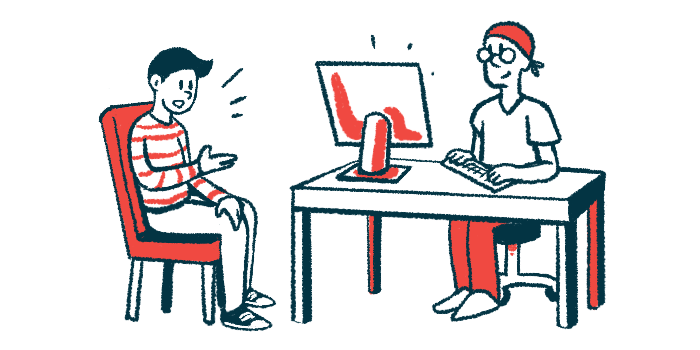Delayed diagnosis common with PAH, multinational survey finds
Vague symptoms, lack of awareness contribute to misdiagnosis for many

About 41% of pulmonary arterial hypertension (PAH) patients in a multinational survey were initially misdiagnosed, seeing an average of 2.9 physicians before getting their correct diagnosis.
The non-specific nature of their disease symptoms and a lack of awareness among patients and primary care physicians contribute to this delay, researchers said.
“Development of better screening strategies may help address this barrier to timely PAH diagnosis,” they wrote in their study, “The diagnostic journey of pulmonary arterial hypertension patients: results from a multinational real-world survey,” which was published in the journal Therapeutic Advances in Respiratory Disease.
“Increasing awareness of PAH among both physicians and the general public and developing more widely available, accurate screening tools could play important roles in enhancing diagnostic speed,” the researchers wrote.
In the U.S., many patients live with their symptoms for more than two years before receiving a PAH diagnosis. That’s despite progress with treatment.
Delayed diagnosis found around the world
Researchers from healthcare research firm Adelphi Real World and Johnson & Johnson subsidiaries Actelion Pharmaceuticals and Janssen-Cilag analyzed survey responses from 378 physicians and 572 patients in five European countries, Japan, and the U.S.
The survey was conducted from July 2019 to June 2020. Europe was home to 341 of the patients, 76 were from Japan, and 155 were from the U.S. About 150 of the physicians were pulmonologists, 147 were cardiologists, 51 were rheumatologists, and 30 were internists.
About half (55.6%) of the patients surveyed were female. They had a mean age of 59.1, and 57.3% had idiopathic PAH, meaning the cause was unknown. Some 47.2% were current or former smokers.
Symptoms appeared at a mean age of 53.3. The most frequent symptoms were shortness of breath, which 91.1% reported, and fatigue, experienced by 62.8%.
The mean time from first symptoms to initial consultation was 9.6 months. Symptom severity worsened with longer waiting periods. Patients in the U.S. waited the longest, a mean of 15.3 months, and those in Japan the shortest, a mean of 5.2 months.
PAH symptoms were the leading reason for 71.6% of patients to seek medical help. In about 15% of the cases, the first consultation was with a pulmonologist or a cardiologist. In about two-thirds (67.4%), patients’ own concerns about their symptoms prompted the first visit to the physician, while 24.4% of patients were encouraged by family or friends.
Specialist visits, misdiagnoses common
Most patients (76.4%) were referred to a specialist before their PAH diagnosis. In the U.S., patients were referred to pulmonologists in 68.7% of the cases, and 47.8% were referred to cardiologists.
A misdiagnosis was given to 40.9% of the patients. The most common misdiagnosis was chronic obstructive pulmonary disease, which 10.1% received, followed by asthma, for 8.3%, and heart failure, diagnosed for 5.3%. Misdiagnosis was most frequent in the U.S. (51.3%) and the least frequent in Japan (27.6%).
Patients waited an average of 7.7 months from their first consultation to their PAH diagnosis. The waiting period was shortest in Japan, where patients waited a mean of 5.5 months, and longest in the U.S., where diagnosis was made after a mean of 8.6 months.
PAH diagnosis was reached after a mean of 12.2 months for those who initially consulted with a cardiologist, and after 9.3 months for those who first saw a pulmonologist. The fastest diagnosis, 7.8 months, was received for those who saw an internist.
About 64.3% of patients in the U.S. were diagnosed by pulmonologists. In Japan, 67.6% were diagnosed by cardiologists.
Increasing awareness of PAH among both physicians and the general public and developing more widely available, accurate screening tools could play important roles in enhancing diagnostic speed.
Disparity in getting PAH diagnosis reported by patients vs. physicians
Patients reported receiving a PAH diagnosis a mean of 17 months after experiencing their first symptoms. Physicians reported diagnosing their patients 3.2 months earlier than that, giving a mean of 13.8 months.
“This disparity may be partly due to the time taken by patients to consult a physician about their symptoms,” the researchers wrote.
Some 192 patients waited a year or more to be diagnosed, while 212 patients waited less than six months. A greater proportion of male patients (48%) were in the group who waited a year or longer than in the group diagnosed within six months (42.5%). About 63.5% of patients with idiopathic PAH waited a year or longer, and 53.3% waited less than six months.
Both the proportion of patients who were misdiagnosed and the mean number of misdiagnoses increased with time until PAH was diagnosed.
The study was the largest to date “to illustrate a diagnostic delay in PAH from the perspective of the patient,” the researchers wrote. “Results indicate that both patient and physician factors contribute to the time taken to obtain the correct diagnosis.”









